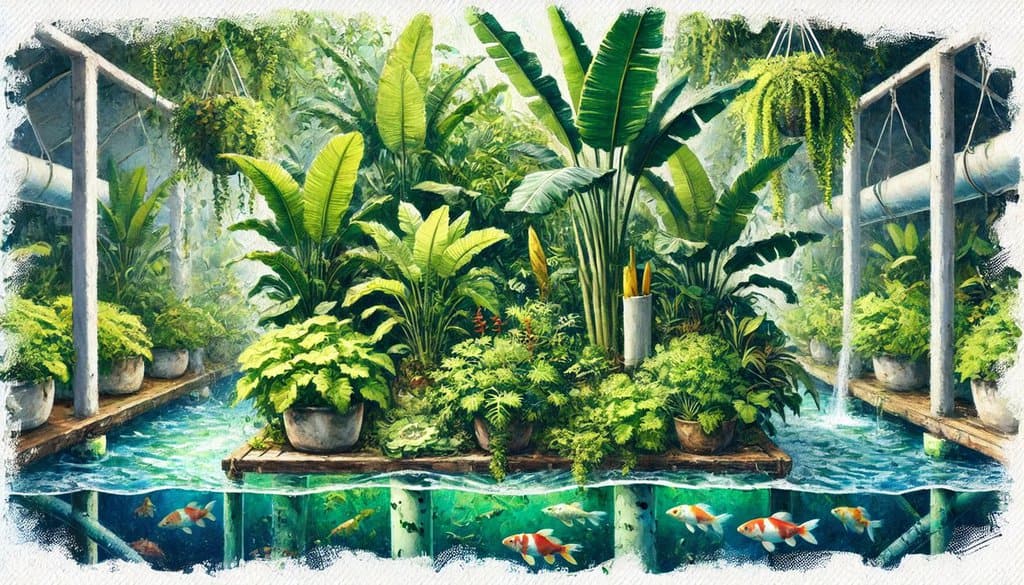Yes, you can grow tropical plants in an aquaponics system. Aquaponics provides a controlled environment that can be tailored to suit the needs of tropical plants, even in non-tropical locations. Here’s what you need to know:
Suitable Tropical Plants for Aquaponics
Several tropical plants can thrive in aquaponic systems:
- Bananas: Dwarf varieties of banana plants can be grown successfully in aquaponics setups.
- Citrus Trees: Dwarf varieties of lemons, limes, and oranges are suitable for aquaponics.
- Papaya: This tropical fruit tree can be grown in an aquaponic system with proper care.
- Tropical Herbs: Basil, which includes many tropical varieties, grows well in aquaponics.
- Tropical Houseplants: Pothos, small palms, and dwarf elephant ears are tropical plants that tend to root well in water-based systems.
Considerations for Growing Tropical Plants in Aquaponics
When setting up an aquaponics system for tropical plants, keep these factors in mind:
- Temperature Control: Most tropical plants require warm temperatures. You may need to heat your system if you’re in a cooler climate.
- Lighting: Tropical plants often need high light levels. If growing indoors, ensure your grow lights can provide adequate intensity and duration.
- Nutrient Requirements: Some tropical fruits like bananas and citrus have higher nutrient demands. They may be better suited for larger, more established systems.
- Root System: Choose plants that can tolerate constant moisture. Many tropical plants are well-adapted to this condition.
- System Size: Larger tropical plants like dwarf fruit trees will require more space and resources than smaller herbs or leafy greens.
- pH Levels: Monitor and adjust pH levels to suit the specific needs of your chosen tropical plants, but don’t forget the fish species preferred pH.
By carefully considering these factors and selecting appropriate tropical plant species, you can successfully grow a variety of tropical plants in your aquaponics system, regardless of your geographical location. Remember to start with easier plants and gradually introduce more challenging tropical species as you gain experience with your system.
Find the best fish species for your aquaponics:

